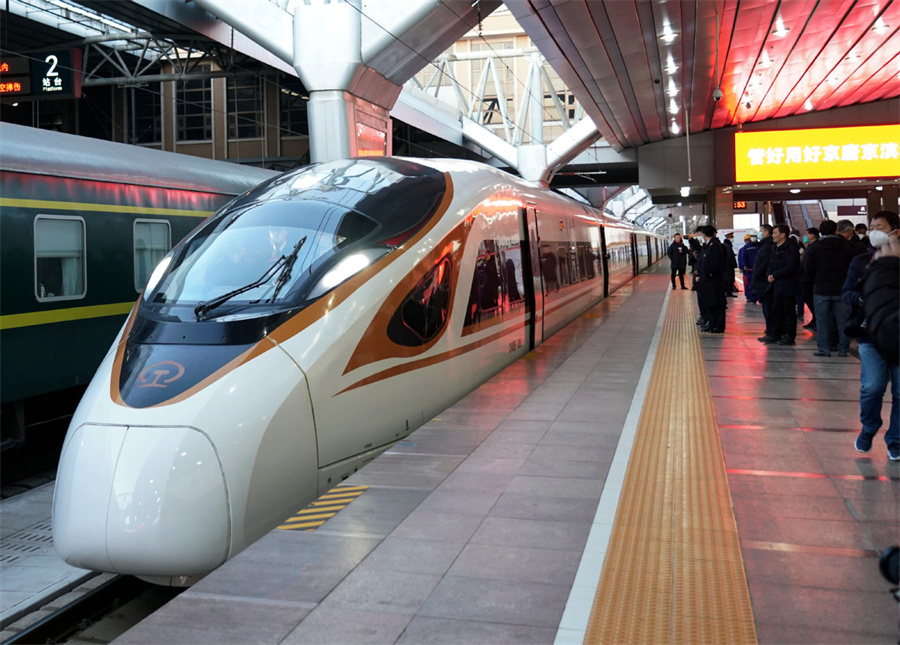Rail sector seeks recovery in new year

A Fuxing high-speed train, G8801, departs from Beijing Railway Station for Qinhuangdao, North China's Hebei province in the morning on Dec 30, 2022. [Photo/Xinhua]
Network predicts strong growth ahead as country returns to normalized travel
More than 4,000 kilometers of new railway lines were put into operation last year, bringing the total network of China's railway system to 155,000 km, with 42,000 km being high-speed railways, according to the national railway operator China State Railway Group on Tuesday.
Last year, the sector built more railway infrastructure to stabilize economic growth despite the downward pressure on the economy caused by the epidemic and external challenges.
A total of 4,100 km of new railway lines opened to traffic last year, and 2,082 km were high-speed railways, Liu Zhenfang, president of the company, said at the company's annual conference in Beijing.
The network plans to build more railways this year. More than 3,000 km of new railway lines are expected to be put into operation this year, and 2,500 km will be high-speed railways, he added.
It is part of the company's annual goals in 2023 to promote the sector's high-quality development and contribute to the country's resurgence following COVID-19.
A total of 2.69 billion passenger trips are expected to be made this year, a significant year-on-year increase of 67.6 percent.
Some 3.97 billion metric tons of freight are expected to be handled this year, up 1.8 percent year-on-year, Liu added.
The sector aims to receive 817 billion yuan ($118 billion) in total transportation revenue this year, a year-on-year increase of 17.9 percent.
The expected revenue is back to the amount of 2019 — prior to the pandemic — when the sector gained 818 billion yuan as revenue.
Among them, passenger services are expected to bring in 332 billion yuan in revenue, a year-on-year increase of 54.6 percent.
Affected by the epidemic, fewer people traveled last year, with the network handling 1.61 billion passenger trips.
However, the network played a key role in transporting goods during the epidemic last year. The amount of cargo transported via the railway network was 3.9 billion tons, up 4.7 percent year-on-year.
A total of 1.49 billion tons of cargo were coal for power production, a year-on-year increase of 13 percent.
Despite the downward pressure on the economy, the sector completed 710 billion yuan in fixed asset investment last year to stabilize economic growth.
The railway sector, especially its passenger services, was badly hit by the epidemic in the past three years.
Fewer people traveled and fewer services were arranged, and shops were shut at railway stations.
As China has downgraded its COVID-19 management, transport hubs including railway stations are gradually resuming their hustle and bustle.
The railway sector is preparing for the upcoming Spring Festival travel rush, which will begin on Jan 7 and end on Feb 15.
























